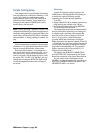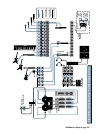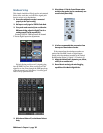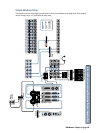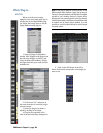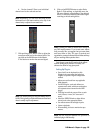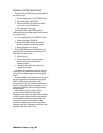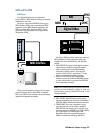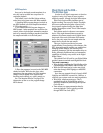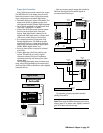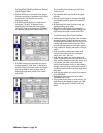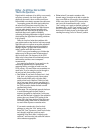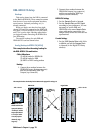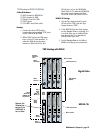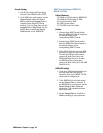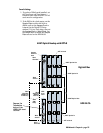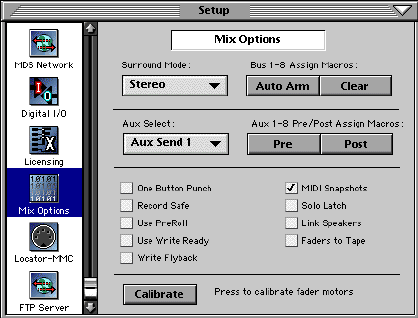
D8B Manual • Chapter 4 • page 108
MIDI Snapshots
Once you’ve developed several snapshots for a
mix, they can be recorded into a sequencer for
consistent playback.
This feature is set in the Mix Options window,
under Setup in the lower menu bar. When enabled:
1) Incoming MIDI program changes (received on
any MIDI channel) can recall Snapshots numbered
0–127 on the console.
2) The D8B sends MIDI Program changes on
MIDI channel 1 when snapshots are recalled on the
console, either via the dynamic automation snapshot
track or by manually recalling a snapshot from either
the snapshot window or via the front panel.
3) Place the sequencer in record on the D8B MIDI
channel and cable. While the mix plays, select
snapshots at the appropriate time. Each snapshot
change is stored as data in the sequence and
therefore can be shifted, cut, copied, pasted, etc.
See “The Snapshot Window” on page 69 for
information on how to set the program change
MIDI channel.
Word Clock and the D8B —
The Kitchen Sync
In order for all digital components to function
together in unity, they must all move together,
sample-by-sample, through the digital data stream.
Word clock is an incredibly important part of
digital recording! The concept is simple: If multiple
devices are synchronized together via word clock,
they progress together through the digital data
stream, one sample at a time. This is called sample-
accurate sync.
Each system works in reference to one master
device. Forty-eight thousand times a second (or
whatever the common sample rate is) digital slaves
keep track of the word clock status of the master
device; they only output the next sample when the
master device outputs the next sample.
This type of system provides very accurate
synchronization. Incorporating a time reference, like
MTC, along with sample accurate sync enables time
stamping of data changes, like start-stop time,
snapshot placements, real-time automation data, etc.
Hence, ultimately flexible and way cool automation
capabilities of virtually every control on the Digital
8•Bus! Yahoo!
The optional Clock I/O card for your Digital 8•Bus
provides a means to send and receive digital word clock.
This card is necessary:
• When digitally combining the Digital 8•Bus with a
computer-based DAW, MDMs, video recorders, etc.
• When the D8B must send or receive word clock
other than through ADAT lightpipe or AES/EBU
connections.
Sync data can transmit directly through ADAT
Lightpipe and AES/EBU connections. However, a
complete sync system needs two main ingredients:
• Word clock, sample-accurate sync. This is
provided through the Digital 8•Bus optical or
AES/EBU connections, and through the optional
Clock I/O card.
• Time reference to stamp automation data for
accurate playback. This is typically provided
through MIDI Time Code (MTC).



